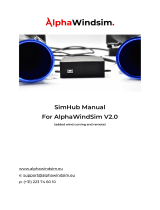
Most LCDs are TN-displays (Twisted-Nematic-displays). They contain
a liquid that turns the polarisation level of light by 90°. STNs
(Super-Twisted-Nematics) turn the polarisation level of light by
at least 180°. This improves the display's contrast. However, this
technique will lead to a certain colouration of the display. The
most common colourations are called yellow-green and blue mode. A
grey mode appears more blue than grey in practice. To compensate
for the undesired colour effect, FSTN-technology uses another foil
on the outside. The resulting light loss, however, makes this
technology only sensible for lit displays. The different colours
appear only in unlit or white-lit displays, however. Once the
lighting is coloured (e.g. LED-lighting yellow-green), the re-
spective display colour moves to the background. A blue-mode-LCD
with yellow-green LED-lighting will always look yellow-green.
Small displays with low display scope are usually controlled
statically. Static displays have the best contrast and the
maximum possible angle. TN-technology fully meets its purpose
here (black-white display, cost-efficient). However, as the
displays grow, more and more lines would be needed in static
operation (e.g. 128 x 64 graphics = 8,192 segments = 8,192
lines). Since this number of lines would not fit on the display,
nor a control-IC, Multiplex operation is chosen. The display is
structured in rows and columns and a segment is located at each
crossing point (128 + 64 = 192 lines). Here, row by row is scanned
(64 x, i.e. multiplex rate1 : 64). Since only 1 row at a time
is active, however, the contrast and also viewing angle suffer
with increasing multiplex rate.
5.3 | Viewing Angle 6 O'Clock /12 O'Clock
Every LC-display has a preferred viewing direction. Viewed from
this direction, the display has the best contrast. Most displays
are produced for the 6 o'clock viewing angle (also: bottom view,
BV). This angle corresponds to that of the calculator lying flat
on the table. 12 o'clock displays (top view, TV) are best
integrated into the front of a table unit. All displays can be
read vertically from the front.
5.4 | Reflective, Transflective, Transmissive
Reflective (unlit) displays have a 100%-reflector on the rear.
Lighting from the rear is not possible. Transflective displays
have a partially permeable reflector on the rear. They can be























